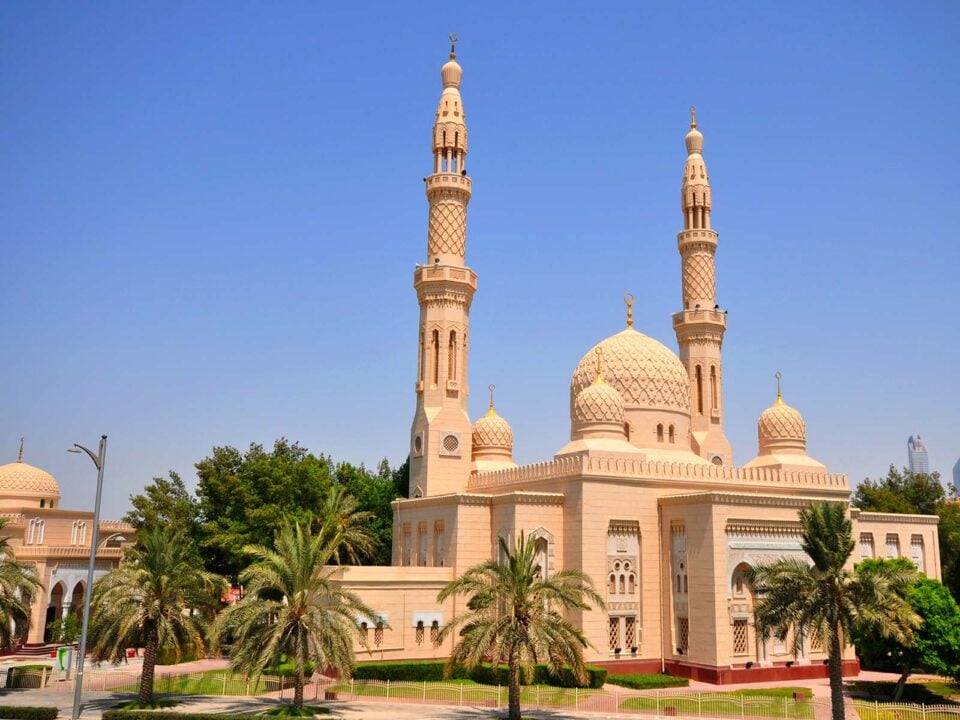Jumeirah is the largest mosque in Dubai and one of the largest religious buildings in the UAE. In a country where it is forbidden for tourists who do not profess Islam to visit mosques, it became the first shrine that opened its doors to non-Believers. This is a serious step towards strengthening existing ties between representatives of different religions, finding cultural understanding and revealing the essence of Islam firsthand.
General information
The Jumeirah Mosque is one of Dubai’s most beloved architectural treasures and tourist attractions. What makes Dubai unique and attractive is that it is a harmonious combination of East and West, history and modernity, the bright brilliance of city attractions and the modesty of local Muslim residents. An example of such harmony is the Jumeirah Mosque in Dubai, which can accommodate up to 1,500 people. Every year, thousands of people from all over the world cross its threshold, confirming the belief of the Islamic clergy that an “open” mosque can become an effective platform for understanding the essence of religious teaching, transmitting verses of the Koran by word of mouth, and attracting new followers.
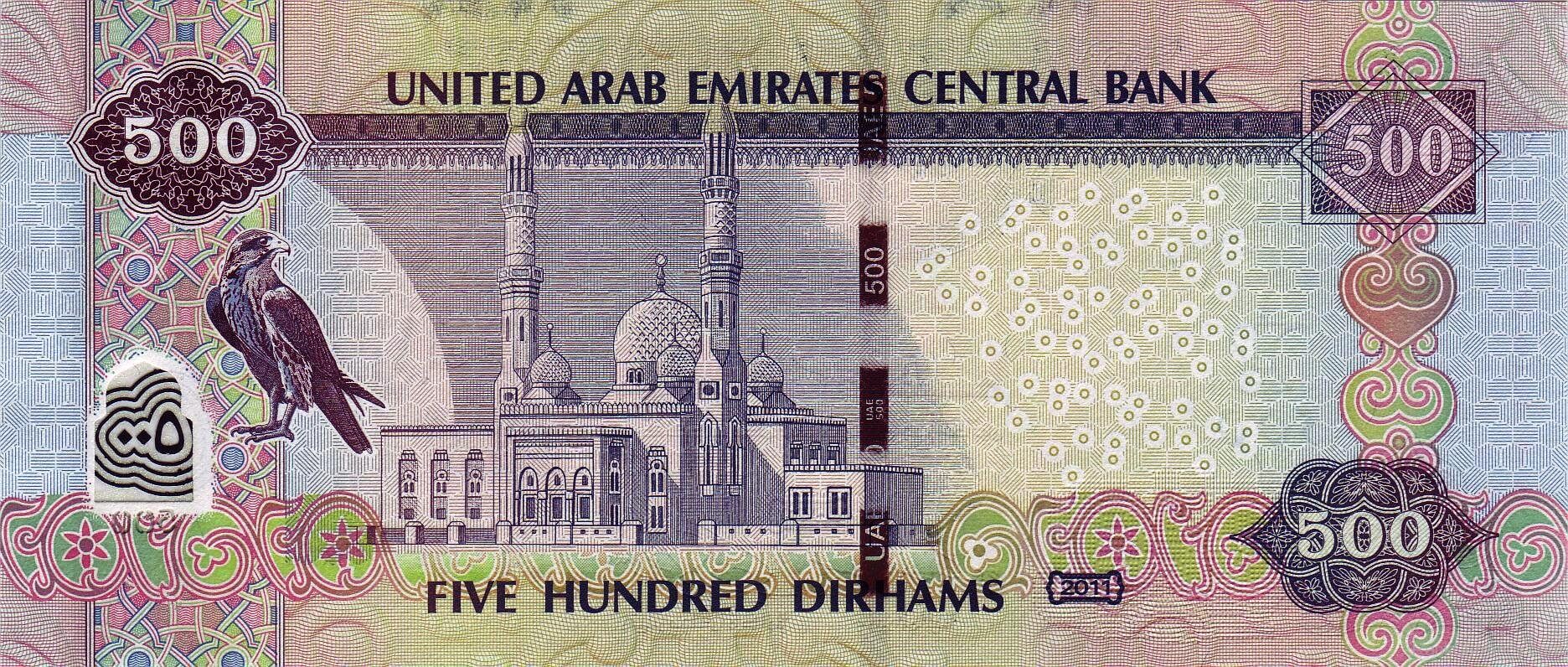
The foundation of the mosque was laid in 1975, and construction work was completed in 1979. The structure of rare pink sandstone fits seamlessly into the overall picture of the city and deservedly received the title of”the most elegant religious building in the Emirates”. The Jumeirah became the decoration of the DH500 banknote and a favorite subject for photographers. Especially good are the evening and night photos of the mosque in Dubai – due to the skillfully created artificial lighting, it looks mesmerizing.
Useful to know! At the initiative of Sheikh Mohammed bin Rashid Al Maktoum, Prime Minister of the United Arab Emirates and Emir of Dubai, the Center for Cultural Understanding was opened, one of the tasks of which was to organize excursions to the Jumeirah Mosque in Dubai for representatives of other religions, which led to a sharp increase in interest in the mosque.
Architecture and interior decoration
The most beautiful mosque in Dubai was built using the latest technologies, but according to the laws adopted for temple structures 10 centuries ago by the Fatimid Caliphate. Still, the massive building looks modern, impressing with its grandeur, stained glass windows, a giant central dome decorated with gold stone and carvings, and two 70-meter-high minarets that can be seen even from other parts of Dubai. Jumeirah exudes a restrained sophistication – only on closer inspection do the luxurious details of the facade become noticeable.
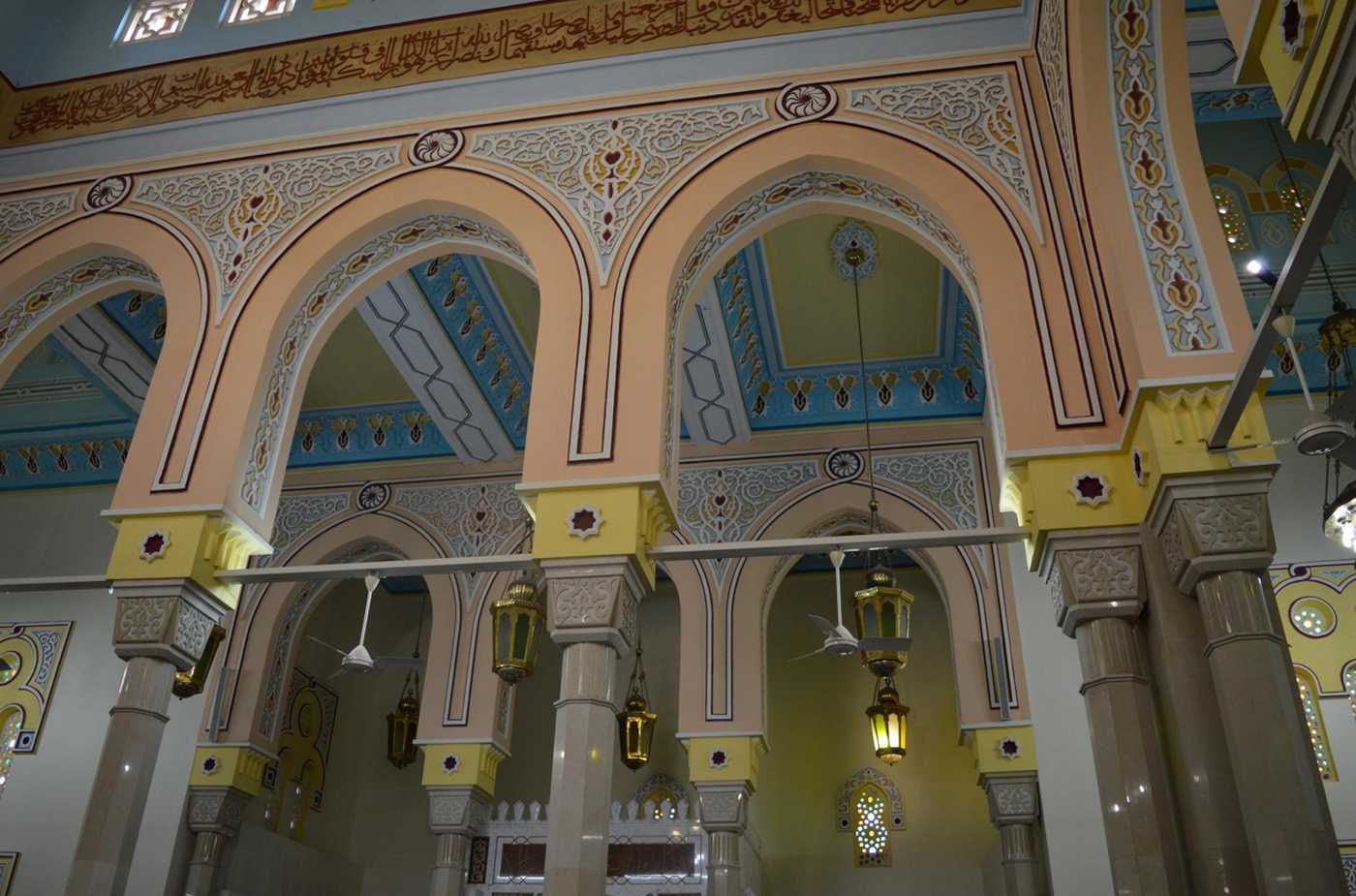
The prayer hall of the white Mosque in Dubai is built in hypostyle – its floor and roof are connected by columns. Opposite the main entrance to the hall is the Qibla wall, which indicates the location of the holy Kaaba.

The Koran prohibits the use of images of living beings inside mosques, so the design of the male Jumeirah prayer hall is dominated by ornaments, and in the female one – the most delicate patterns. In addition, you can admire the refined Arabic calligraphy. The floor of the monastery is covered with a carpet, on which intricate flowers “bloomed”.
Palm Jumeirah is the largest artificial island on the planet
Visit rules and useful tips
When visiting the Jumeirah Mosque, guides teach students about the basics of Islam, Muslim culture and traditions. The tour lasts 1 hour and 15 minutes and is conducted in English. In this mosque in Dubai, you can take photos and shoot videos. The main thing is not to point the camera lenses at people who are praying.
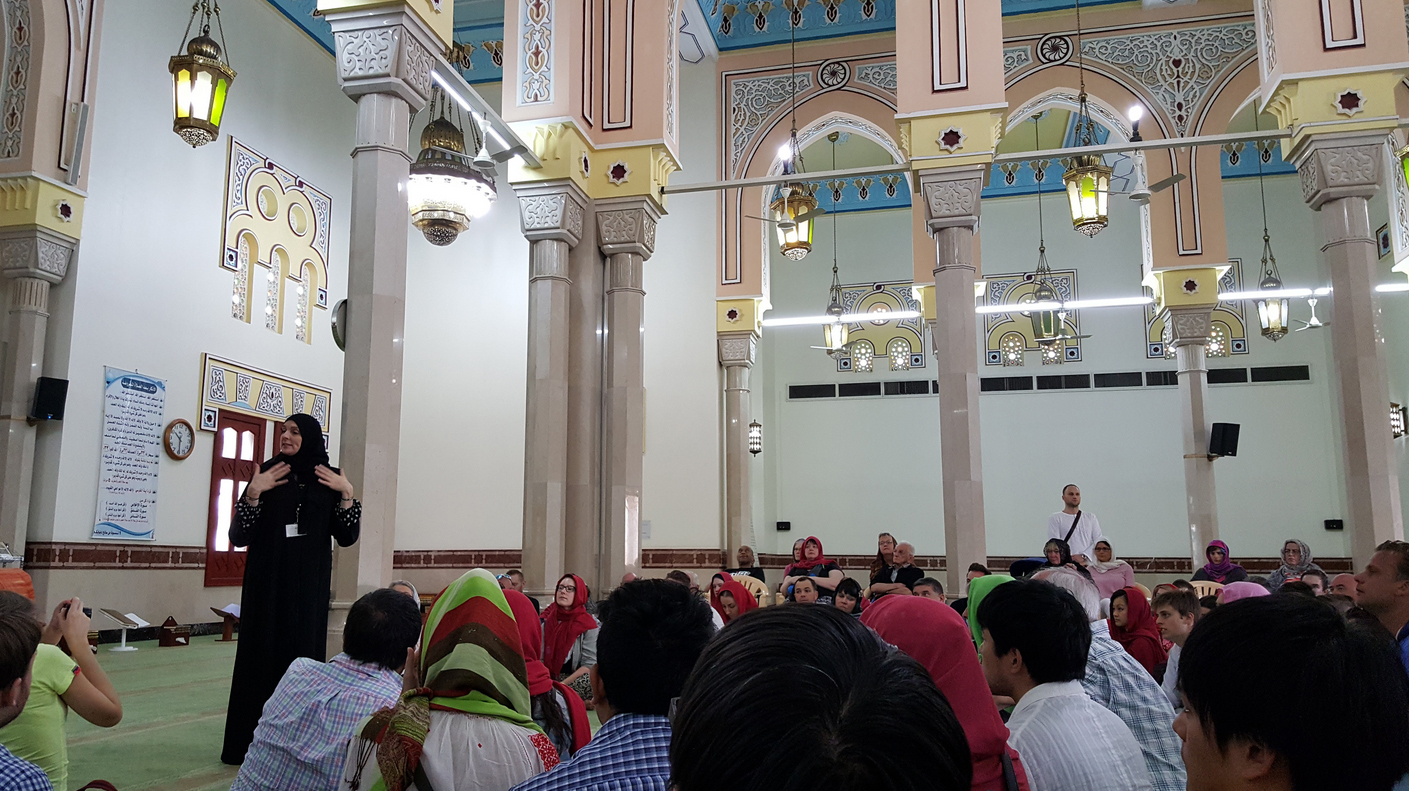
- While the tour guide is speaking, try not to interrupt him or talk too loudly to each other. Time for answering questions, as well as for taking photos and videos is allocated before and after the tour.
- The Center for Cultural Understanding invites you to visit the Jumeirah Mosque on any day – from Saturday to Thursday. The tour starts at 10: 00. This is the most appropriate time between the morning and afternoon prayers.
- When you arrive at the mosque 15 minutes before the tour, go to the reception to pay for it, and then go to the Majlis, where you can enjoy tea, coffee and desserts. Help yourself right here, don’t take sweets with you – this is a sign of disrespect.
- To visit the mosque, you must meet the requirements for appearance: clothing must cover the shoulders and knees. Women should also cover their heads, hiding their hair. If you are not properly dressed, you will be provided with everything you need before entering the Jumeirah for free.
- Before tourists enter the prayer hall, they are shown a ritual ablution procedure. Anyone can take part in it by performing simple steps in sequence. People enter the gym after removing their shoes and leaving them in a specially designed locker.
- Do not bring children under the age of 5 to the mosque, as they may disturb the silence of the sacred structure. Do not touch the books on the shelves.
Practical information
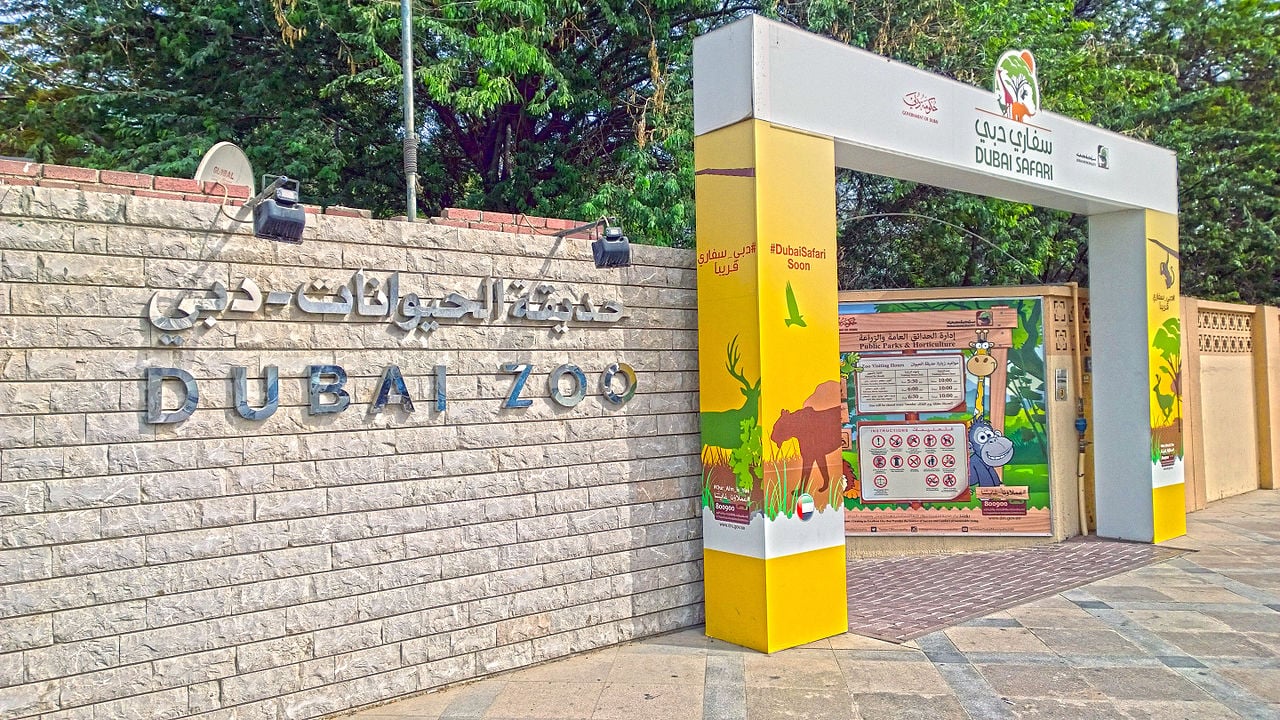
How to get. The Jumeirah Mosque is located next to the Palm Strip Shopping Mall and Dubai Zoo, in the Jumeirah area, on the eastern edge of Jumeirah Public Beach. High minarets are visible from afar, so it is impossible to pass by this monumental structure. The easiest way to get there is by taxi. The nearest metro station is Al Jafiliya Station, a 45-minute walk away, but you can take buses 7, 12, C15 or F11 to reach the Iranian Hospital 2 stop.
- Address: Jumeirah Beach Road, Jumeria 1.
- Opening hours: Saturday to Thursday at 10: 00 and 14: 00, gathering at the main entrance of the mosque 30 minutes before the tour starts. Entry for non-Muslims is restricted during Ramadan and other major Muslim holidays.
- Admission fee: 35 dirhams (local currency only accepted) for an adult (including treats inside the Jumeirah) and free for children under 12 years old.
- Official website: www.jumeirahmosque.ae.
The most hospitable mosque in Dubai and its Cultural Understanding Center invite everyone to attend Arabic language courses and organize private visits to Jumeirah for those who for some reason cannot visit the mosque as part of a regular group.

